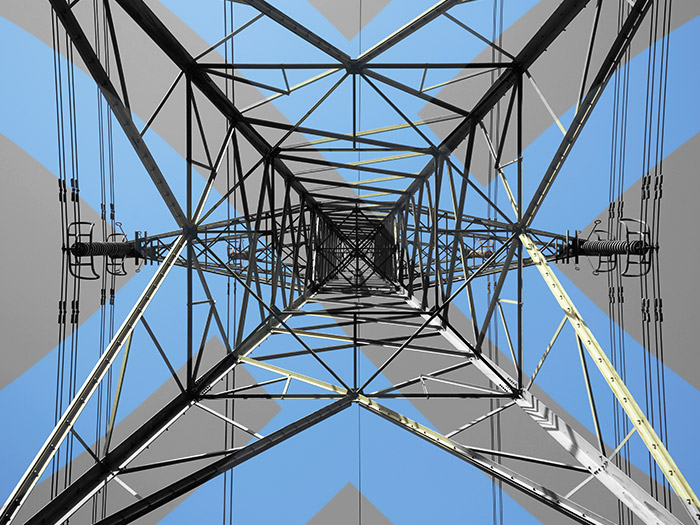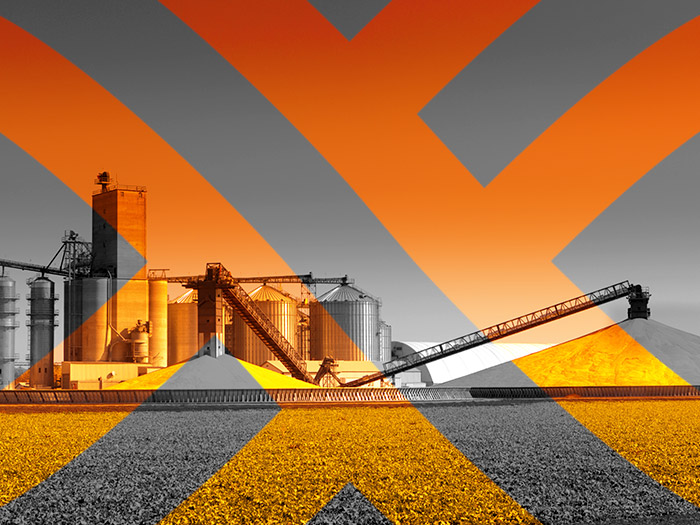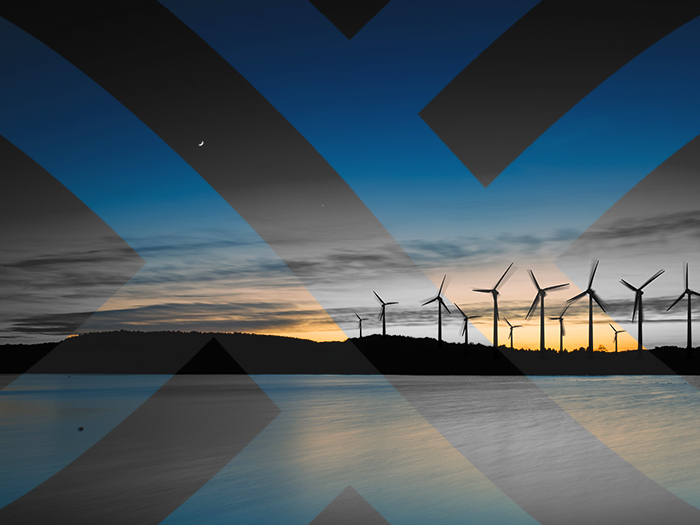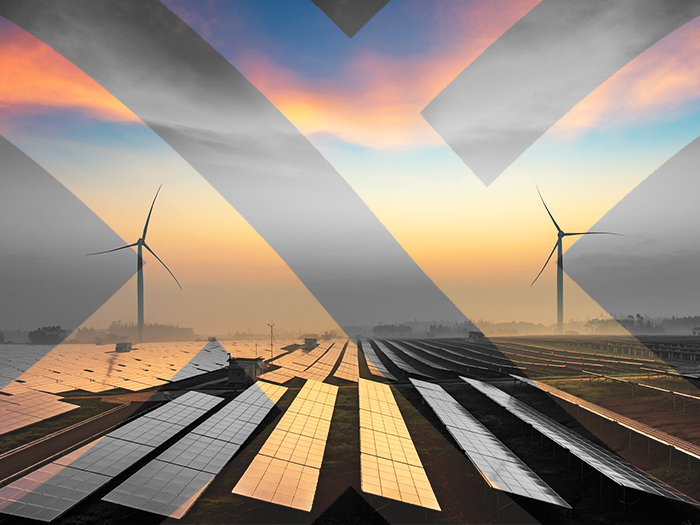Insights
better business decisions
Posted 1 year ago | 7 minute read

The future is flexible
Guest blog with Donald Speirs, Business Development Manager at Dulas
Our customers have been asking a lot recently about the benefits of energy storage and flexible generation. So we thought we would explore this topic with the help of some experts in the field, Dulas.
Meeting the growing need for flexible energy resources with battery storage
Driven by the need to decarbonise, our energy mix is becoming increasingly dominated by intermittent renewable technologies. Last year saw a number of records broken across the year as conditions aligned to deliver new firsts in wind generation and total zero carbon generation. For example, in November 2022, for the first time ever wind generation provided a peak amount of power greater than 20GW, a notable threshold for those who work in the industry and more than twice the peak capacity of the UK nuclear fleet. Turning to this year, on 10 January, the UK generated record wind-powered electricity again, with provisional data showing a “max wind generation record” exceeding 21.6GW. For scale, UK peak demand at lunchtime on the same day was approximately 35GW.
Capping our most productive days
With so much wind capacity available and more in the pipeline, on the windiest days, National Grid ESO is forced to deliberately cap the amount of power coming from intermittent sources, with the owners being paid to turn them off. If too many generators have a high peak power output at the same time, the combined power could overload the system. Known as ‘curtailment’, it is a persistent problem for renewable energy generators, and a costly one for the consumer and the planet. In 2022, a year characterised by extraordinary rises in energy prices, the UK spent £215m on turning wind farms off, and then another £717m turning on gas power plants to replace the lost wind power on days when the wind was not blowing. The result was an extra 1.5 million tonnes of carbon emissions.
Planning for bigger peaks in the future
This is incredibly frustrating given that many people are currently living in fuel poverty in the UK and that the climate crisis must be addressed urgently. Every pound spent on curtailing renewables is a pound wasted, but the problem isn’t going away any time soon. As sectors such as heat and transport move away from fossil fuels and towards electrification, there will be higher electricity demand peaks, while electricity generation will become even more variable as levels of wind and solar generation increase. National Grid ESO’s Future Energy Scenarios suggest that we will have 15TWh of curtailment by 2030 in all Net Zero aligned scenarios.
How can we stop wasting valuable renewable resources?
One of the answers to this question is to increase demand and either use or store this excess electricity during times of peak renewables generation. This can be done by retrofitting or co-locating battery storage systems with renewables projects. Batteries can soak up cheap renewable energy when it’s abundant, and discharge it when congestion has eased.
National Grid estimates that by 2050, we will have 35GW of battery storage across the whole of the UK (National Grid’s Future Energy Scenarios). Regen’s analysis indicates that we need around 20GW of storage as part of a 2035 net zero power system. Battery storage is a rapidly growing sector – RenewableUK reported last year that the battery storage pipeline had doubled in 12 months. And it’s not just utility-scale projects that are coming online, forward thinking business owners are getting in on the act too, a large proportion of which are at the medium commercial and industrial scale, not just the large corporations or multi-national utility companies.

“
In some cases, there are tangible commercial benefits for business owners having battery storage on site. Energy storage can be used to lower consumption from the grid at peak times and the grid also financially rewards those who can reduce consumption and/or feed into the grid within a short space of time. Battery storage can help a business become more energy resilient and, if linked to generation on site, it helps the business to operate in a greener way. We have also seen that optimisation technologies and finance can now be combined so that owners start to benefit immediately from having storage on site, without having to take an immediate financial hit.”“From the perspective of Dulas, with the pace of renewable energy generation continuing and the growth of other systems that put demand on the grid, such as EVs, we can only see the demand and value of energy storage systems increasing further. For our business strategy and long-term market planning, we’ll be ensuring that our teams are familiar with the most modern systems and standards as they continue to evolve.”
Donald Speirs, Business Development Manager at Dulas, commented:
In addition to generation, owners of hybrid projects can facilitate energy-shifting applications with variable capacity and consumption patterns, allowing developers to shift dispatch to times of higher prices. Energy technology company, GridBeyond, created the world’s first hybrid battery and demand network, and are a leading provider of demand-side response services and battery optimisation technologies.
“A range of grid-balancing services provide opportunities to earn revenue by supplying stored energy to the ESO. There are also opportunities to trade energy from battery storage on the wholesale market to capitalise on fluctuating prices. But with multiple markets on which to trade, the landscape for battery storage is a complex arena. However, understanding how and where you can stack revenues and provide an automated response is the key to proving the business case and unlocking maximum revenue from battery assets. Trading is already a big part of the value stack and, for some projects, represents the majority of income generated. This means real-time and continual modelling, that takes into account variables including weather variability and overall demand uncertainty, is required to assess the most likely range of returns, allowing you to place your asset into the best available market.”

Chris Smith, GridBeyond Asset Development Director said:
“GridBeyond’s smart trading solution combines machine learning, AI and data solvers with a trading team. The company has long standing experience (4+ years) managing state of health and State of charge for battery assets. With significant investment in data science and accurate forecasting tools, its trading team optimises all opportunities with high levels of confidence. This ensures that project owners are able to maximise the value not only from the renewables project, but from the co-located battery storage asset. The company also manages a project financing facility from Triodos Energy Transition Europe Fund to establish a pipeline of behind the meter battery storage projects across the UK and Ireland.”
Great opportunity, greater resilience
The war in Ukraine has accentuated how volatile international energy markets can be and the only way to avoid reliance on such markets is through continued build-out of renewables infrastructure, linked to an increasing amount of energy storage. The business case for investing in energy storage facilities is a strong one, and not just financially. Owning battery storage can help bolster a business in the face of unforeseen crises and help to balance the grid, as well as helping with individual and wider net zero efforts.
Dulas installed its first battery storage project over 25 years ago, and we have been adding to our technical knowledge ever since, so we are well-placed to provide consultancy services to those who wish to understand this rapidly growing sector. Please get in touch if you would like to know more.

Dulas provides a comprehensive range of services for renewable energy schemes, across wind, hydro and solar. Our highly experienced consultants, planners and engineers have worked with all of the major renewable power technologies, and understand the full life cycle of projects from inception through to operations and energy storage integration. Over forty years of expertise provides peace of mind and minimises development risk.
Tel: 01654 705000
Email: info@dulas.org.uk








